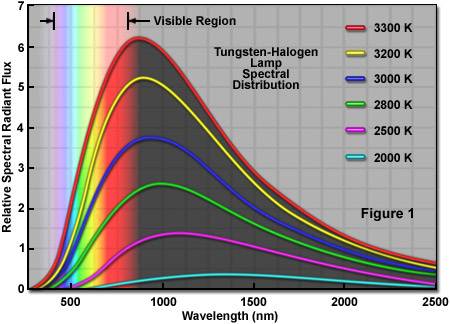The ones briefly mentioned as "not on the market yet"?There are LED lights available with a uniform spectrum output but they are costly.?Re: What camera has the best color accuracy?: Open Talk Forum: Digital Photography Review (dpreview.com)LED has non-uniform spectrum with a big drop between blue and green. Tungsten is much flatter.
https://www.researchgate.net/figure...ndescent-tungsten-light-bulb-b_fig1_312320039
This video clearly illustrates why your statement:
is wrong.Incandescent lights lean toward orange so they are no more "natural" than LEDs which lean toward blue.




